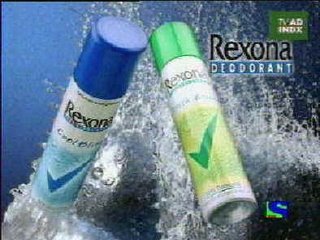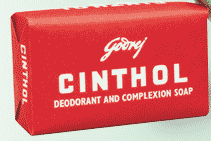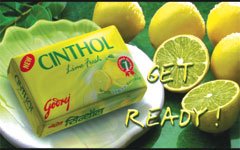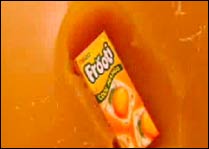Company : VIP industries ltd
Agency :Lowe
VIP is the undisputed market leader in Rs 1200 ( some say it is 600 crore) crore Indian Luggage industry. Launched in 1971 VIP aimed to capture the market dominated by unorganized sector. Indian Luggage market is largely consisting of soft luggage an
 d moulded luggage.
d moulded luggage.The luggage market is going through a tough time with low demand and stiff competition from unorganized sector. In India since the frequency of travel is low, the luggage manufacturers are facing a unique problem. The product is a high involvement product at the time of purchase but after the purchase the interaction with the product is limited. Hence marketers find it tricky in keeping their brand at the top of the mind of customers.
VIP ha
 s established itself in the Indian market using product innovations, stress on quality and brand building. VIP was the first to introduce “non reversible multi safe lock”, soft grip handle, dual action lock and central locking system. These innovations together with brand building made VIP a market leader.
s established itself in the Indian market using product innovations, stress on quality and brand building. VIP was the first to introduce “non reversible multi safe lock”, soft grip handle, dual action lock and central locking system. These innovations together with brand building made VIP a market leader.Then VIP faced the problem faced by most of the giants: the brand becoming generic to the category and local brands eating into the share of the company.
In 1997 came a formidable threat to VIP – Samsonite. With in short time Samsonite established its presence in the luxury segment of the market. While VIP was very dominant in the mid- segment, it had no presence in the luxury segment. Samsonite posed a major threat to VIP and garnered a market share of about 35% in the luggage market with in a short period of time. This forced VIP to seriously reconsider its marketing strategy. To counter the threat of Samsonite, VIP launch
 ed Elanza range of premium luggages. Samsonite meanwhile also wanted to enter the popular segment ( 800- 2000 range) . It launched the brand “American Tourister “ to enter this segment posing a major threat to the market leader. More over Samsonite had an international contemporary look and appealed to the new generation than VIP which was not perceived as a vibrant brand.
ed Elanza range of premium luggages. Samsonite meanwhile also wanted to enter the popular segment ( 800- 2000 range) . It launched the brand “American Tourister “ to enter this segment posing a major threat to the market leader. More over Samsonite had an international contemporary look and appealed to the new generation than VIP which was not perceived as a vibrant brand.Inorder to attract the new generation and create a new brand identity, VIP embarked on a rebranding exercise. The usual ads of VIP was appealing to the middle class and focusing more on emotion. The “ Kal Bhi, Aaj Bhi” ads were very powerful and appealed to the middleclass. But since the consumers changed, inorder to succeed, the brand had to have a contemporary look.
The new strategy of VIP is focusing on capturing or owning the concept of “Travel”. The logo was changed to a more contemporary logo and the ads were changed to communicate the new positioning. The agency thought of the most appropriate moments of travel and decided that the “ time of departure “ is the most critical constituents of travel. The ads aimed to tie the brand to Travel. Thu
 s originated the “ Bye- Bye “ campaign with a very youthful imagery that appealed more the new generation travelers. The baseline was changed to “ Happy journey” thus attempting to own the concept of traveling.
s originated the “ Bye- Bye “ campaign with a very youthful imagery that appealed more the new generation travelers. The baseline was changed to “ Happy journey” thus attempting to own the concept of traveling.The new campaigns were supported by new ranges of products. The sub brands of VIP include Delsey (international brand from France) to capture the premium segment, Footloose: the trendy bags for the youth, Buddy: school bags and Alfa: value for money segment.
VIP is a market leader that is trying hard to retain its leadership position. It had failed to create barriers for competition by keeping many categories open for competition to enter. Now also leather bag category is now seeing lot of action with big players like Hidesign taking the lead. VIP does not have a presence in this segment.
But with its strong brand equity and ability to change with the consumer trends will help VIP in its future battles.
VIP : Happy Journey









